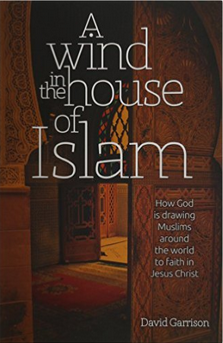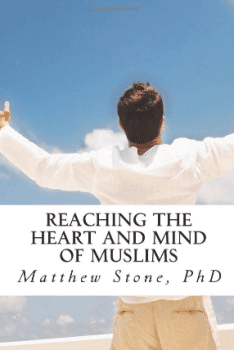Book Review: Margins of Islam: Ministry in Diverse Muslim Contexts
Book Review: Margins of Islam: Ministry in Diverse Muslim Contexts (2018), edited by Gene Daniels and Warrick Farah and published by William Carey Publishing. Reviewed by Warren Larson, Senior Research Fellow and Professor, Zwemer Center for Muslim Studies, Columbia International University.
At first glance, because of its title, one might assume this slim book is about Muslims who are on the fringes of Islam. Not so. It is about ordinary, every-day Muslims, situated somewhere between “orthodox” and those who have been separated from Islam (like the Ahmadiyya). In other words, the authors are talking about the majority, or vast majority of Muslims in the world–all of whom see themselves as followers of Islam.
This review will first discuss what the book is about and move on to say why it is so valuable for Christian mission among the 1.8 billion Muslims in our world. It will close with a brief summary of my contribution (Chapter 8) on what it means to reach folk Muslims for Christ in Pakistan.
What This Book is About
The text presents fourteen case studies by scholar-practitioners. These include Sufis and folk practices in Asia and Africa, secular Muslims in Bosnia/Herzegovina, Berbers, followers of Fetullah Gulen in Turkey, Russified Muslims, Thai Muslims, Chinese Hui, and Uyghur Muslims. It talks about varied Muslims in France and the U. K. and one chapter deals with “glocal” (global and local) Muslim youth. The final chapter does an excellent job of summarizing the burden of the book: Mission to Muslims must begin at the local level, where they live, how they live, and what they say about themselves.
The contributors are addressing some fundamental questions: What, after all is Islam? Is it a religion, culture, or something else? And, who speaks for Islam? Unlike the all-too-common, prevailing assumption that views Islam as monolithic (Essentialism), these scholar-practitioners see it as a kaleidoscope. The material is a collection of representative examples of various kinds of Muslims throughout the entire world, and Kenneth Cragg’s cogent comment sums it all up, “A Muslim is what Islam tells them to be, and Islam is what a Muslim says it is.”
That is what makes this text different than most others on Islam. Generally, texts on Islam are simplistic, covering topics like the Qur’an, the five pillars, and possibly a bit of the Hadith thrown in for good measure. Yes, Islam may have its pillars and rigid rules on submission to Allah, but that is not the end of it. A “textual approach” is not completely off base, but is too narrow, viewing Islam from above. These authors see it from below.
Why it’s Important
First, the book is important because it corrects some inaccurate ideas about Muslims. The chapters look at Islam as it is, not at what we imagine it to be. For example, in talking about Islam in Java, one writer explains that years ago, he was informed by a Christian speaker that Muslims in Indonesia are not “real Muslims.” “They are,” he said, “just folk practitioners.” They might be a different kind of Muslim, but they are nonetheless Muslim. And, by the way, it is no longer accurate to speak of “The Muslim World.” The “over there” has become “over here.”
Second, the book corrects unhelpful and harmful attitudes. For example, one author talks about a British pastor who categorically stated the Muslim religion is to blame for all the atrocities Muslims carry out. Perhaps he is basing this on a claim by Abu Bakr al-Bagdadi (former IS leader), who on May of 2015, in essence said: “Of course Islam is not peaceful; it was never intended to be a religion of peace, because we’re fighting against infidels all over the world.” But Abu Bakr al-Bagdadi clearly does not speak for all Muslims.
Third, it holds before us the urgent need to win more Muslims for Christ. In the past, for various reasons, missionaries used to say Islam was the greatest challenge to the church. This is still true. Even though Muslims are now coming to Christ in the tens of thousands every year, Islam is growing annually by 32 million (mostly biological growth). The point is, we are not keeping up, and must do better. This book suggests that engaging them at the local level (Adaptive Mission) will produce more fruit.
“Ordinary” Muslims in Pakistan
Finally, Chapter 8 of the book (written by this reviewer) focuses on folk Muslims in Pakistan as only one example of what it means to reach them at the local level. My chapter states that in some ways, traditional and folk Muslims have things in common. Both have the idea that God predetermines everything by his white-hot power. For years, theologians of Islam have debated predestination, but as the following verses show, the Qur’an allows little room for human choice. For example, “No soul can believe except by the will of Allah” (10:100); “Ye will not except Allah wills” (76:29-31a). There are at least twenty-one statements that suggest God lets stray whom he will and guides whom he will.
Such theology pushes “ordinary” Muslims to believe that if God guides you, that is great; if not, you are doomed. In contrast, Jesus’ followers have hope and assurance. The Hebrew word barak (blessing) literally means to “bend the knee,” but it is not a matter of submitting to God as a slave. We are his beloved children, and so the true meaning of blessing is joy and trust, unmarred by fear and care. And since we are his children, we can always praise him because he is looking out for us.
I go to on to say although one would think because Pakistanis believe the overall will and control of Allah is final, and that one must trust in his sovereign will in the face of disease and death, the fact is they spend vast amounts of energy and money trying to fight it. Shrine activity is how Muslims put a human face on religion in trying to meet their felt needs. Hence, a thorough understanding of felt needs will open many doors for the spread of the gospel. If Allah is not delighted by obedience and is not displeased by sins, nor hostile to the arrogant, they must look for a way to have their needs met.
Moreover, if Allah’s hand is not close to protect and his eyes are indifferent to hostile forces, then charms, spells, curses and incantations must be used to gain peace for the soul and health for the body. Illness does not just happen, say Pakistani Muslims: it befalls victims because of hostile forces like the evil eye and other menacing forces. Ordinary Muslims need physical, emotional and spiritual healing and a Christian worker must work, not only in a scientific way, but in a spiritual manner. The gospel alone brings deliverance. And since veneration of pirs in Pakistan is done in an attempt to fulfill a deep felt need (it leaves the heart empty), the cross-cultural worker must make much of Jesus as the only one who has the power to save them from Satan, fear of evil spirits and terror of the grave. Muslims feel a great need to know God personally and the good news is that they can through Christ.
In conclusion, Margins of Islam is an extremely valuable guide for understanding and reaching Muslims in the 21st century. The contents do not provide simple answers, but the book’s strength is that it shows how we can communicate the gospel to Muslims on the local level. In the end, only God can give the kind of fruit we so desperately look for, but this book will help workers minister to Muslims through “adaptive mission.
You can purchase this book on Amazon and from William Carrey Publishing.




